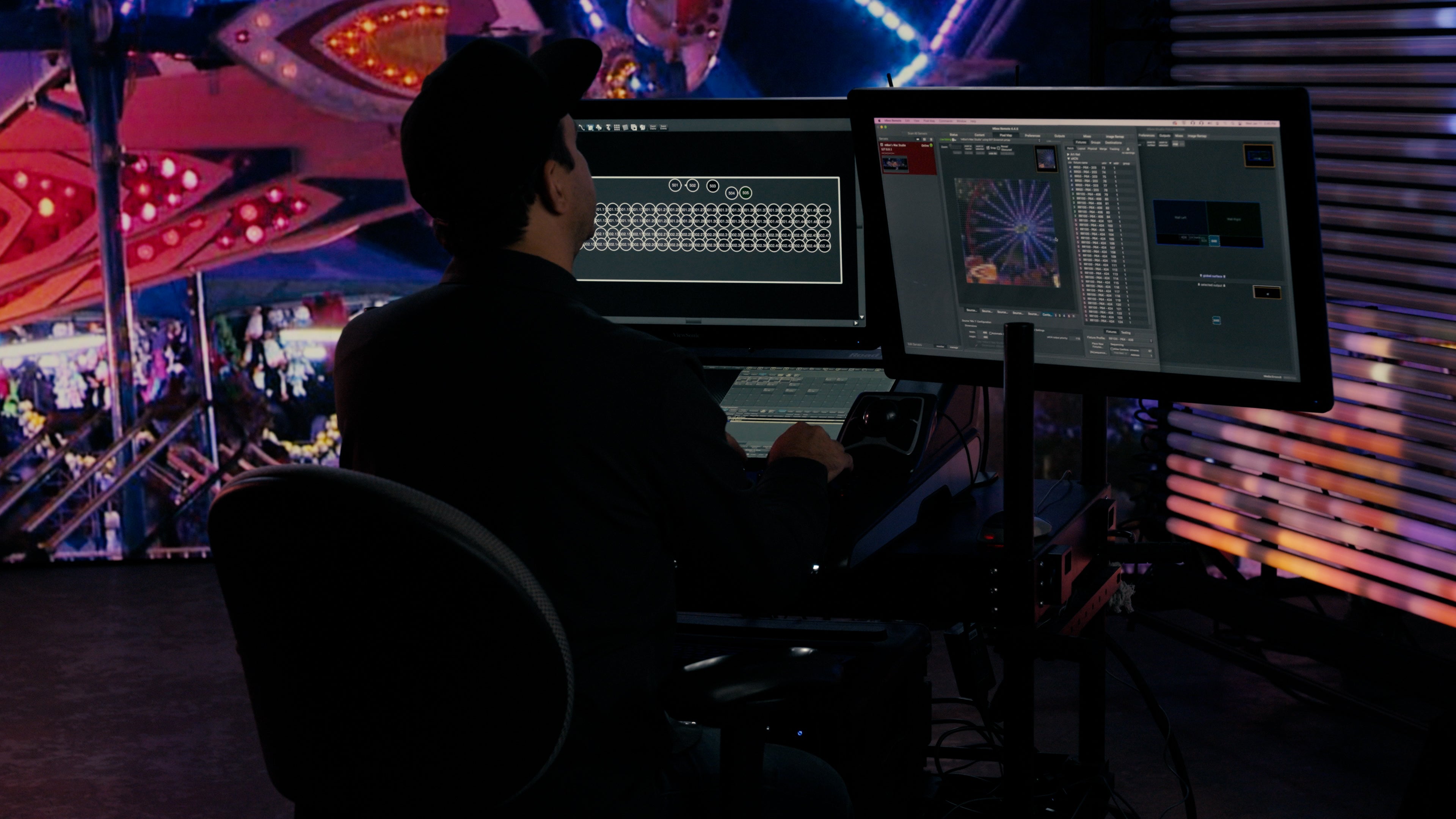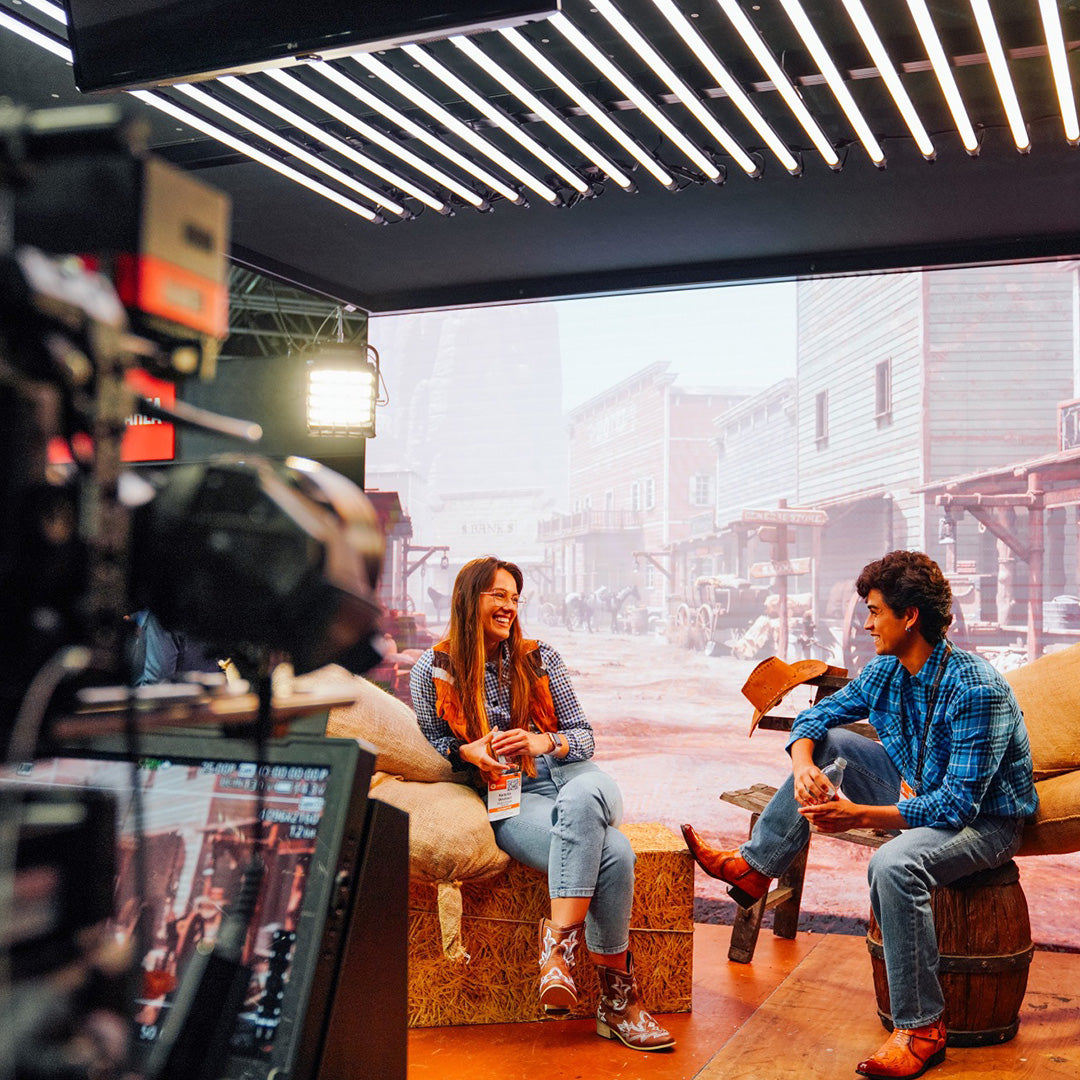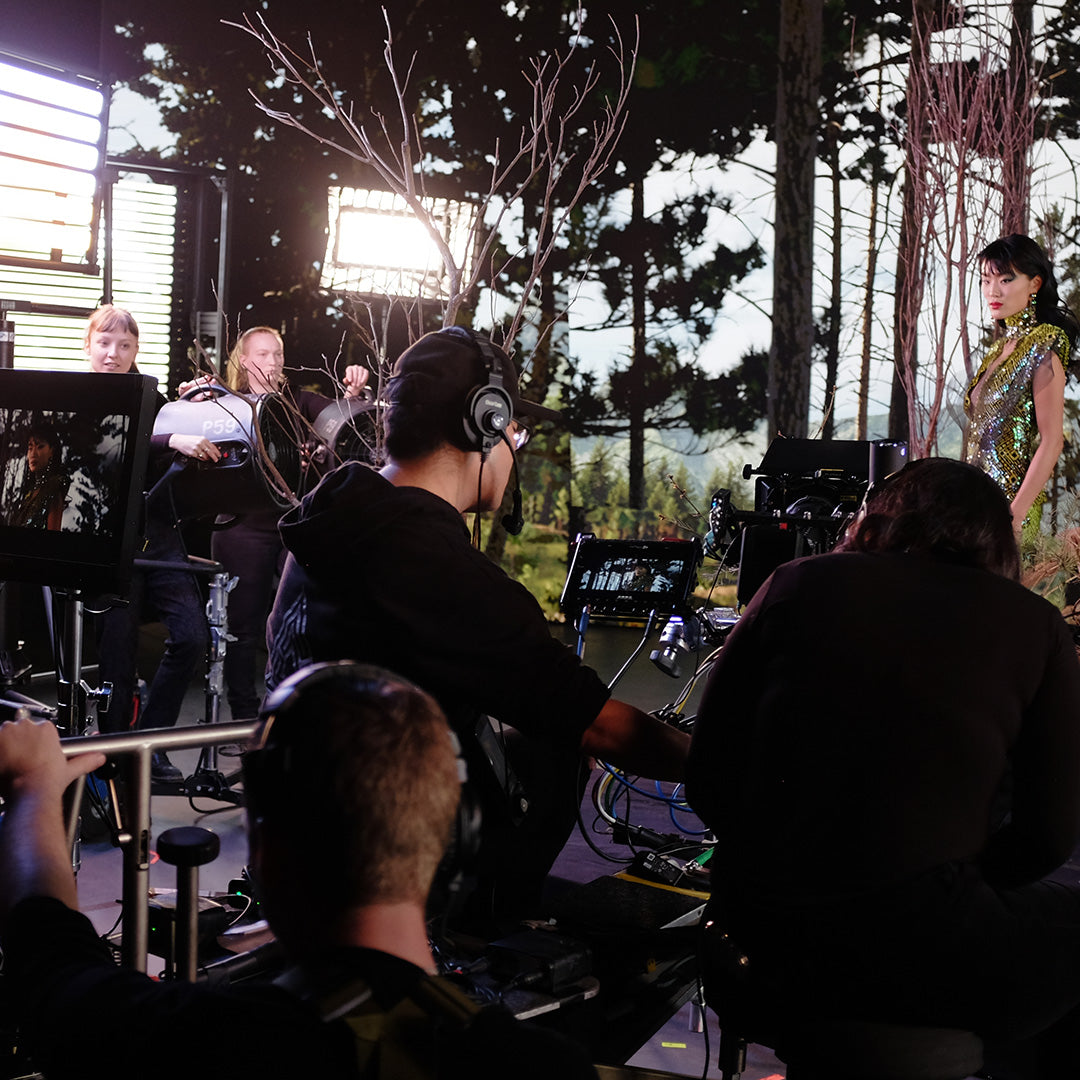PROTOCOLS
Deciding which data protocols to use with image-based lighting (IBL) is a question easier asked than answered. Just like every other aspect of production, it’s not just about one department and the real-world constraints often dictate virtual world decisions.
Certain fixtures, hardware, and software constraints, and established infrastructure, along with other considerations will inevitably affect any determination you make regarding data management. But let’s venture into the realm of fantasy, where the decision is yours to make solely on the needs at hand.
There are essentially three choices: DMX, ArtNet, sACN.

DMX
DMX, the salty dog of a million productions over the previous decades, is often the first thought in data management. Before the advent of multi-pixel and data heavy lighting fixtures, this often made the most sense. But with lights consuming ever more data with each passing generation, DMX limitations are proving to be a hardening impediment.
Highly pixelated lighting fixtures have an ever-growing presence on set and are ubiquitous in IBL scenarios. Each fixture can easily consume 1/3 or 1/2 or even an entire universe of data. Such demand on a DMX network would, by default, require a huge amount of hardware for its network infrastructure.
One DMX run per light or two, nodes galore, and optical splitters sprinkled around the set like confetti in a very environmentally unfriendly parade. Moving lights from one location on stage would require managing all its hardware as well. Rigging gaffers and network techs would be running around, heads spinning, keeping track of cables and universe, making sure everything was plugged into its appropriate place.
Imagine, as in our example above, 48 separate DMX lines running to each 848. That is a total of 146 for just those three lighting fixtures.
Doable. Not practical. And an effective way to have the crew hate you.

ArtNet
ArtNet offers two solutions to the IBL challenge. Broadcast and Unicast.
ArtNet is able to send data from multiple universes over one line, making the hardware situation with DMX much more manageable

ArtNet Broadcast
ArtNet Broadcast overcomes the DMX hardware conundrum by sending out information on every universe. Every light fixture receives every packet of information, and upon receiving the data, decides if it applies to itself. This solves one problem but potentially produces another. It's like getting on a show and suddenly you get every email that gets sent to every department. You get the information, but the sheer volume of stuff you have to sift through becomes a whole new problem. The lighting fixtures on set feel your pain.
Furthermore, many lighting fixtures read only 8 universes at a time. Our example of 146 universes creates a huge data logjam for each fixture, slowing the processing down tremendously. Reaction time is a factor, and you will very likely fail the Voight-Kampff test. And you know what happens when you fail the Voight-Kampff test.
ArtNet Unicast
But fear not. ArtNet Unicast comes to the rescue… sort of.
Here, each light fixture will only listen to the universe to which it is subscribed. This eliminates the data clogging of ArtNet Broadcast, though not without its own demands.
Before ArtNet Unicast can be used, each light fixture- in our example, 146 linear LED Rainbow 2s- will need to have its unique 12-digit IP address assigned. Each of those addresses will be matched with the console. It's not hard, but it is an arduous and time-consuming process with the possibility of a data entry error over the 3504 digits is pretty good.
sACN
The last option, should you be lucky enough to have light fixtures that accept this protocol, is sACN. Like ArtNet, it has two modes: Unicast and Multicast.
Unicast
As in ArtNet Unicast, light fixtures in sACN Unicast must be IP addressed.
The big difference is that only pertinent information within the universe, and not the entire universe of data itself, is sent. This has huge implications for the amount of data running over the network.


Multicast
The most nimble configuration of all is sACN Multicast. Here, only the universe has to be assigned to each light, and the protocol assigns the rest of the IP address. As a result, when commands are sent out, only the pertinent data enters the data stream, and only the lights in the pertinent universe bother to read it. This reduces the amount of information clogging the pipelines and each light has to process.
The drawback to using sACN is that many lights do not use this protocol. However, with IBL in mind, Quasar Science made sure to make the Rainbow 2 and Double Rainbow compatible with DMX, ArtNet, and sACN.
So whatever protocol you choose, for whatever reason, the Rainbow 2 and Double Rainbow will be easily integrated into your network.
Pixel Mapping
Whether it's virtual or conventional, today’s data driven lighting set-ups demand a level of communication and versatility that the Rainbow Series has in spades.
In this episode of The Science, we explore pixel mapping - the process of mapping a video or photo on to a light or an array or lights to create interactive lighting.






